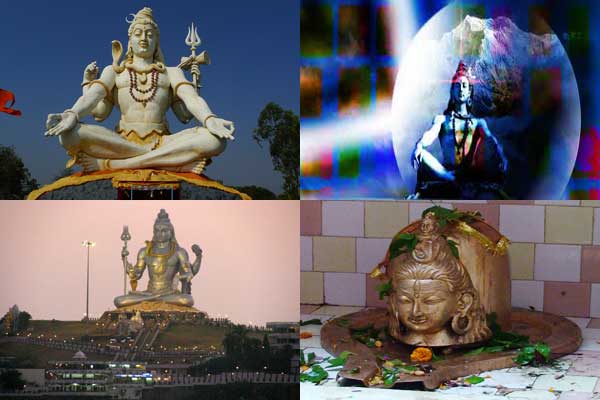
New Delhi: Lord Shiva is considered the Supreme God within Hinduism. In other branches of Hinduism such as in the Smarta tradition, he is regarded as one of the five primary forms of God.He is “the Destroyer” or “the Transformer” among the Trimurti, the Hindu Trinity of Brahma, Vishnu, Mahesh (Shiva).
He is is usually worshipped in the aniconic form of lingam. He is described as an omniscient yogi, who lives an ascetic life on Mount Kailash in Tibet ,as well as a householder with a wife Parvati and two sons, Ganesha and Kartikeya.
The worship of Shiva is a pan-Hindu tradition, practised widely across all of India, Nepal and Sri Lanka.
Some historians believe that the figure of Shiva as we know him today was built up over time, with the ideas of many regional sects being amalgamated into a single figure.
One expert traces the origin of Shiva to the pre-Aryan period, and believes that he played an important role in the Indus Valley Civilization. How the persona of Shiva converged as a composite deity is not well documented.
Five is considered as the sacred number for Shiva.
Shiva’s body is said to consist of five mantras, called the panchabrahmans. As forms of God, each of these have their own names and distinct iconography:
1. Sadyojata: This western face of Śhiva will give both happiness and sadness to all creatures.
2. Vamadeva : This is the name of the preserving aspect of the God Shiva, one of five aspects of the universe he embodies.
3. Bhairava: This is the fierce manifestation of Lord Shiva associated with annihilation.
4. Tatpurusha: Tatpurusha Shiva faces the east. Here he is a deluded purusha or ego.
5. Ishana: Ishana Shiva is peaceful and benevolent. He has a camphor-blue skin and is two-armed.
The worship of Shiva in the form of a lingam is important. Shiva means auspiciousness, and linga means a sign or a symbol.
Hence, the Shivalinga is regarded as a “symbol of the great God of the universe who is all-auspiciousness”.
Shiva also means “one in whom the whole creation sleeps after dissolution”. Linga also means the same thing—a place where created objects get dissolved during the disintegration of the created universe.
Since, according to Hinduism, it is the same god that creates, sustains and withdraws the universe, the Shivalinga represents symbolically God Himself.
The worship of the Shiva-Linga originated from the famous hymn in the Atharva-Veda Samhitâ sung in praise of the Yupa-Stambha, the sacrificial post.
In that hymn, a description is found of the beginingless and endless Stambha or Skambha, and it is shown that the said Skambha is put in place of the eternal Brahman.
Just as the Yajna (sacrificial) fire, its smoke, ashes, and flames, the Soma plant, and the ox that used to carry on its back the wood for the Vedic sacrifice gave place to the conceptions of the brightness of Shiva’s body, his tawny matted hair, his blue throat, and the riding on the bull of the Shiva, the Yupa-Skambha gave place in time to the Shiva-Linga.
In the text Linga Purana, the same hymn is expanded in the shape of stories, meant to establish the glory of the great Stambha and the superiority of Shiva as Mahadeva.





